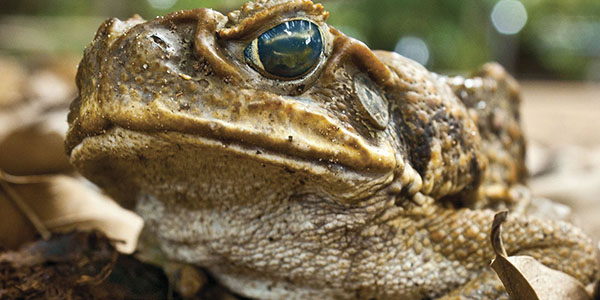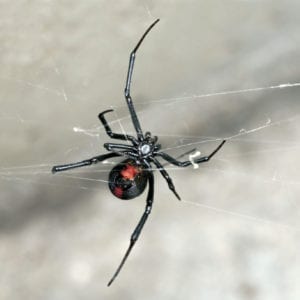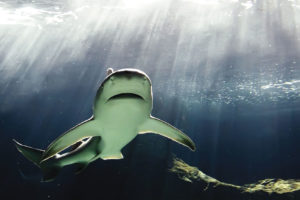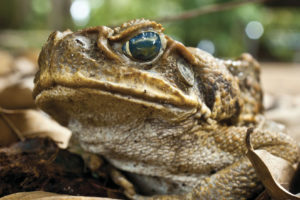
Deadliest Creatures In Australia
Australia may be known for its cuddly critters like the koala and quokka, but it’s also the number one country in the world for deadly creatures. From poisonous fangs to great big gnashers and a punch harder than Mohammed Ali’s, these are the deadliest creatures in Australia that you should keep an eye out for during your travels.

Box Jellyfish
Get stung by one of these floating electrical lamps and it will most certainly ruin your holiday. Responsible for over 60 deaths since 1883, this is the most lethal creature on earth with venom so strong that victims can go immediately into shock and suffer a cardiac arrest within minutes. Tentacles can grow up to three metres in length, with about 15 on each corner of the box and carrying thousands of stinging cells. Stinging cells can be deactivated by pouring vinegar over them and then remove the tentacle, but if the victim goes into cardiac arrest, CPR is obviously a priority. They can be found in the oceans surrounding north Australia, and have been witnessed as far south as Exmouth, W.A.

Redback Spider
Recognisable for the red stripe on its back, the redback is one of Australia’s most infamous inhabitants. The females are seen more regularly than their male counterparts, and produce a strong, messy web near the ground where she can hide her egg sac. Unfortunately, you’ll find these little blighters in urban areas, in buildings, under furniture and tucked within stacked items likes boxes and shelves. Known to eat insects, lizards and mice, plus males after mating, they rarely leave the security of their web and are not aggressive unless coerced, but their bite is poisonous enough to kill a dog, small child and the elderly. Be bit by one and you can expect a case of nausea, vomiting, muscle spasm and general pain.

Eastern Brown
Snake The second most toxic land snake in the world, you do not want to aggravate the eastern brown snake. Incredibly fast with a bad temper, step on one of these and it will raise its body off the ground, mouth open ready to strike. Look out for them in eastern Australia, in populated areas with mice. When it bites, it releases venom that causes progressive paralysis and stops blood from clotting, causing victims to collapse after just a few minutes. While antivenom reverses its effects, there’s no surprise that it has killed more people in Australia than any other.

Saltwater Crocodile
The largest reptile in the world, the saltwater crocodile is a modern day dinosaur living in north Australia. With the potential to grow to lengths of seven metres and weigh nearly 1000kg, they are opportunistic predators with the ability to take down a one tonne buffalo, but generally live off of small reptiles, fish and crustaceans. Crocodile skin used to be exported out of Australia, but this is illegal since they became a protected species in Oz. There are roughly two human deaths every year in Australia due to crocodile attacks.

Bull Shark
Many attacks blamed on the great white are often a case of mistaken identity of the bull shark. Not only do they have a remarkable resemblance to the great white shark, while they are found more in deep bodies of water, they move around a lot and are sometimes in unexpected locations. This unpredictable nature makes them extremely dangerous. They are also very territorial, and this is often the reason given for why they attack people. Growing to 3.4metres, they can be found around the south-western, NSW and northern coastlines.

Reef Stonefish
Particularly dangerous due to blending into its surroundings, the reef stonefish has a particularly nasty set of spines that can pierce through shoes and skin when an unsuspecting person walks through the water. It carries the most potent venom known in finned creatures, and results in excruciating pain that does not ease with painkillers. The more spines that pierce through, the bigger the severity, but effects include shock, paralysis, tissue death and even amputation of the limb. Make sure you look out for them when strolling along the beach or paddling in the waters from Brisbane to Broome.

Cane Toad
Spreading through the northern tropics of Australia, the cane toad has invaded faster than any other introduced animal – it’s even adapting to life in the dry areas of west Queensland and the dessert of the Northern Territory. Capable of poisoning their predators, they were originally brought to Australia to control the beetle population that in the sugarcane crops, but have since become pests themselves. In fact, it has become such an epidemic that scientists have tried to control the threat and are looking at ways to protect vulnerable wildlife.
